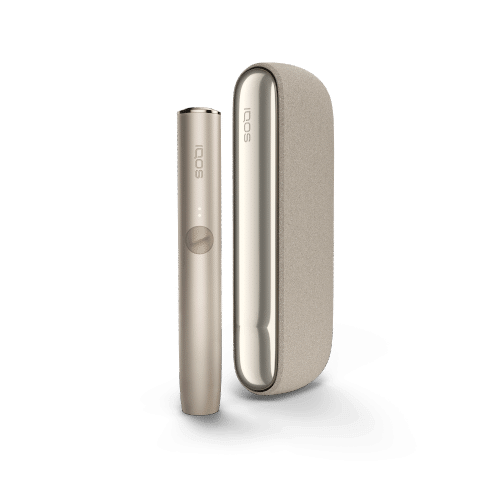Cannabis defoliation might sound like a complex concept, but it’s actually a straightforward gardening technique. If you’re growing high-THC cannabis strains and want to maximize your yield and potency, this process can be a game-changer.
In this article, we’ll explore:
- Its fundamental principles and its implementation in the growing process.
- How it can lead to increased light penetration and airflow, promoting healthier plant growth.
- The potential for higher yields and enhanced THC potency through effective techniques.
What is Cannabis Defoliation?
Cannabis defoliation involves removing some of the leaves from the cannabis plant. This may seem counterintuitive since leaves are essential for photosynthesis. However, strategic defoliation can improve airflow and light penetration, two critical factors for healthy plant growth.
Why Leaves Matter
Leaves are vital for the plant’s ability to produce energy through photosynthesis. They also help regulate the plant’s temperature and protect it from harmful UV rays. However, too many leaves can block light from reaching the lower parts of the plant.
The Technique
It is not about removing all the leaves. Instead, it’s about removing just enough to ensure that light can penetrate the canopy and reach the lower buds. This practice helps in several ways, which we will discuss in the following sections.
Types of Leaves to Remove
Focus on removing large fan leaves, especially those that are shading bud sites. Smaller leaves are generally left alone as they still contribute to the plant’s overall health.
Improved Light Penetration
One of the most significant benefits is improved light penetration. Light is essential for photosynthesis, and ensuring that all parts of the plant receive adequate light can dramatically improve growth and yield.
Light and Photosynthesis
Photosynthesis is the process by which plants convert light into energy. When light doesn’t reach the lower parts of the plant, those sections produce smaller, less potent buds.
Increasing Yield
By removing some leaves, light can reach deeper into the plant. This results in more even growth and larger, more potent buds throughout the entire plant.
How to Achieve Optimal Light Penetration
Removing leaves strategically ensures that light reaches all parts of the plant. Aim to create an even canopy where light can penetrate to the lower buds.
Enhanced Airflow and Disease Prevention
It also improves airflow around the cannabis plant. Good airflow reduces the risk of mold and other diseases, which can devastate a crop.
Importance of Airflow
Airflow is crucial for preventing diseases like powdery mildew and bud rot. These diseases thrive in stagnant, humid conditions, which can occur when plants are too leafy.
Reducing Disease Risk
By improving airflow through this process, you create an environment that is less hospitable to mold and mildew. This keeps your plants healthier and more productive.
Practical Tips for Enhancing Airflow
Remove leaves that are blocking air from circulating through the plant. This helps keep humidity levels in check and reduces the risk of disease.
Better Nutrient Distribution
When you defoliate, the plant can direct more energy and nutrients to the remaining leaves and buds. This leads to more robust growth and higher-quality flowers.
How Nutrients Work
Nutrients are absorbed by the roots and transported throughout the plant. When there are too many leaves, these nutrients are spread thin, leading to weaker growth.
Focusing Energy
By removing some leaves, you help the plant focus its energy on fewer, more critical areas. This results in stronger, healthier growth.
Steps for Effective Nutrient Distribution
Ensure that the remaining leaves and buds are the ones that receive the most light and airflow. This maximizes the effectiveness of the nutrients the plant absorbs.
Higher THC Content
It can also lead to higher THC content in your cannabis plants. This is one of the most sought-after benefits for growers of high-THC strains.
The Role of THC
THC, or tetrahydrocannabinol, is the compound responsible for the psychoactive effects of cannabis. Higher THC levels mean more potent effects.
Maximizing Potency
By ensuring that all parts of the plant receive adequate light and nutrients, you can boost the THC content in your buds. This makes for a stronger, more potent product.
Methods to Increase THC
Focus on defoliating in a way that maximizes light and nutrient distribution to the buds. This helps increase the THC content in the final product.
When to Defoliate
Timing is crucial. Knowing when to defoliate can make a significant difference in the health and productivity of your plants.
Early Vegetative Stage
The best time to start is during the early vegetative stage. This helps prepare the plant for more aggressive process later on.
Flowering Stage
Defoliation during the flowering stage should be done carefully. Removing too many leaves can stress the plant, but removing just the right amount can improve light penetration and airflow.
Monitoring Progress
Keep an eye on your plants and monitor how they respond. Adjust your technique based on the plant’s health and growth patterns.
How to Defoliate Safely
It can be stressful for plants if not done correctly. Follow these steps to ensure you’re defoliating safely and effectively.
Tools Needed
Use sterilized scissors or shears to prevent the spread of disease. Clean tools reduce the risk of infection and keep your plants healthy.
Step-by-Step Process
- Start by removing large fan leaves that are blocking light.
- Work your way down the plant, removing leaves that are hindering airflow.
- Be mindful of the plant’s overall health and avoid removing too many leaves at once.
Aftercare
After the process, give your plants time to recover. Ensure they receive adequate water and nutrients to support their recovery.
Common Mistakes to Avoid
Even experienced growers can make mistakes when defoliating. Here are some common pitfalls to avoid.
Over-Defoliation
Removing too many leaves can stress the plant and hinder growth. Be conservative and remove only what’s necessary.
Incorrect Timing
Defoliating at the wrong time can harm the plant. Stick to the recommended stages to ensure optimal results.
Neglecting Aftercare
Post-care is crucial. Ensure your plants receive the right nutrients and water to support their recovery.
Conclusion
In conclusion, defoliation is a valuable technique for cannabis growers seeking to enhance plant health, optimize nutrient distribution, and increase yields. By understanding the timing and application of this method, along with the necessary aftercare, growers can reap significant benefits. The insights and experiences shared by fellow cultivators underline the importance of moderation and attentiveness in this process. For additional guidance and resources on cannabis cultivation, consider visiting Bud Trainer, where you can find a wealth of information to support your growing journey.










